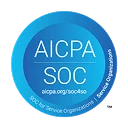Ever wondered how some customer support teams seem to handle inquiries seamlessly and maintain high levels of customer satisfaction?
The secret often lies in their agent onboarding process. A well-structured onboarding experience can make all the difference in setting new support agents up for success.
Integrating new agents into your help desk software isn’t just about training; it’s about equipping them with the resources, knowledge, and confidence they need to excel.
A solid onboarding process not only accelerates their learning curve but also boosts retention and improves overall service quality.
In this article, we’ll guide you through the seven ultimate onboarding checklist template examples designed specifically for help desk software.
These templates will provide a clear roadmap for welcoming new agents into your customer support team, ensuring they feel prepared and empowered from day one. By adopting these strategies, you’ll reduce mistakes while improving agent productivity and customer satisfaction.
What is the agent onboarding program?
Agent onboarding is a step-by-step process that introduces new agents to their job, including company policies, tools, systems, and responsibilities.
It begins before the agent’s first day and continues through the first few weeks or months to ensure a smooth transition.
A strong onboarding program helps agents get up to speed quickly, boosts their confidence, and improves retention.
According to Gallup, only 29% of employees feel fully ready to succeed after onboarding. A clear checklist can guide new hires through each step and help them feel confident from day one.
It also reduces mistakes in the early days and improves customer satisfaction by ensuring consistent and high-quality support.
Investing in a structured agent onboarding process leads to better agent productivity and increased customer loyalty.
What should be included in an onboarding checklist?
An effective agent onboarding checklist for a new support agent is more than a list of tasks; it’s a strategic roadmap for their integration into your team.
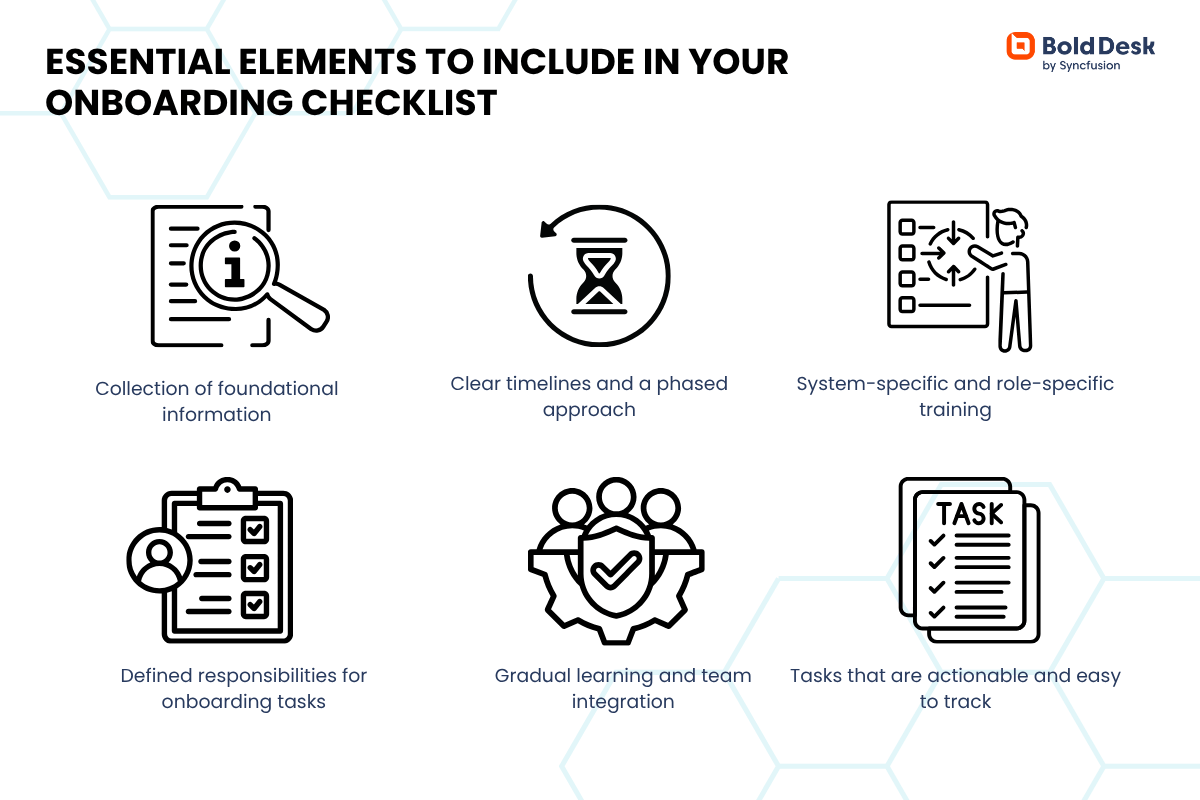
To be impactful, your onboarding checklist should include the following:
Collection of foundational information and access essentials
The first part of the checklist should focus on collecting all the basic information and setting up access.
This involves filling out paperwork, such as contracts and bank details. Additionally, it is important to ensure that the agent has access to all necessary tools.
These tools include the support platform, internal communication apps, the knowledge base, and any other systems used by the team.
Clear timelines and a phased approach
The checklist should be organized into clear timeframes. Breaking it down into phases like before joining, the first day, the first week, the first month, and the end of the probation period.
This helps the new agent understand what to expect and when. It also prevents them from feeling overwhelmed by too much information at once.
Defined responsibilities for onboarding tasks
It’s also important to clearly define who is responsible for each part of the onboarding process.
For example, HR might handle the paperwork, the IT team sets up the systems, the hiring manager oversees the process, etc. This ensures that nothing is missed and everyone knows their role.
System-specific and role-specific training
The checklist should include training on the tools the agent will use, the steps they need to follow to resolve customer issues, how to communicate with customers, and how to handle more complex situations like escalations.
They should also learn about the company’s products or services so they can answer questions confidently.
Gradual learning and team integration
The learning process should be gradual. At first, the agent can observe experienced team members.
Then, they can start handling simple tasks on their own. Over time, they’ll take on more responsibility.
Regular check-ins and team activities help them feel supported and connected to the team.
Tasks that are actionable and easy to track
Every task in the checklist should be easy to track. Each item should be marked as “To Do,” “In Progress,” or “Complete.”
This makes it easy to see how far along the agent is in their onboarding journey.
7 Agent onboarding checklist templates
To effectively integrate your new customer/IT support agents and ensure they’re set up for success, a structured approach is paramount.
That’s why we’ve developed the 7 best agent onboarding checklist templates:
| Onboarding Checklist Template |
| 1. Pre-onboarding
3. Support ticket practice checklist 4. First 30 days – learn & observe 5 . Next 30 days – apply & improve |
Pre-onboarding (before day one)
Before a new support agent starts, it’s crucial to prepare for their success. The pre-onboarding phase of your agent onboarding process establishes expectations and provides essential resources. This ensures new hires feel welcome and ready to begin their roles.

Result: Completing the pre-onboarding stage sets a positive tone for their start. By handling paperwork and granting access to necessary resources, organizations can remove common onboarding obstacles. This allows agents to start their roles with enthusiasm and clarity.
Orientation & setup (guides/video)
The orientation program officially welcomes new agents and provides an introduction to the company along with its support processes.
This phase of the onboarding checklist template includes informative sessions and engaging materials to equip new agents with the tools they need to succeed.

Result: A successful orientation provides vital information and reinforces the agent’s role within the company. By preparing their work environment and resources, organizations support a smooth transition and aid agents in forming connections within the team.
Support ticket practice checklist
The practice phase allows new agents to work with sample tickets and observe how experienced agents handle real scenarios.
This hands-on experience, a key part of any onboarding checklist template, builds confidence and reinforces their theoretical knowledge.

Result: Completing practice and shadowing offers invaluable insights into customer interactions. As agents learn to navigate sample tickets, they gain the skills and confidence needed to handle real support challenges, making them feel integral to the team.
First 30 days – learn & observe
The first 30 days are foundational, focusing on learning and observing. This period helps agents understand company protocols and tools while absorbing the support culture of a successful agent onboarding process.
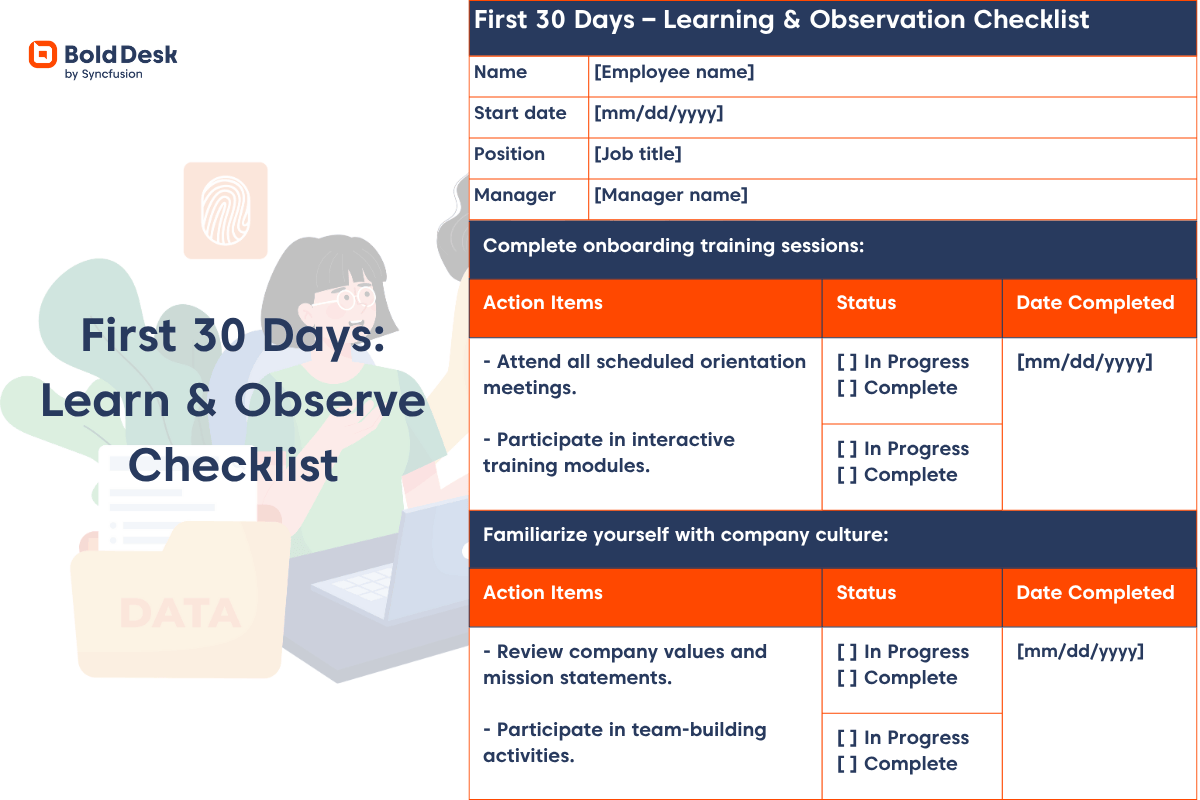
Result: Completing the first month emphasizes growth and adaptation. As agents observe and learn, their confidence grows, allowing them to recognize patterns in customer interactions and engage more deeply in the support process.
Next 30 days (day 31–60) – apply & improve
In their second month, agents shift from observation to participation. This phase of the onboarding template focuses on applying what they’ve learned and handling tickets independently while refining their response strategies.

Result: By the end of this month, agents should feel confident in managing customer interactions. The feedback they receive will lead them to improve continuously and build advanced skills and strategies.
Final 30 days (day 61–90) – own & optimize
During the final month of onboarding, agents take ownership of their roles. They are encouraged to optimize their responses and contribute to team goals with greater initiative, marking the successful completion of their initial agent onboarding.
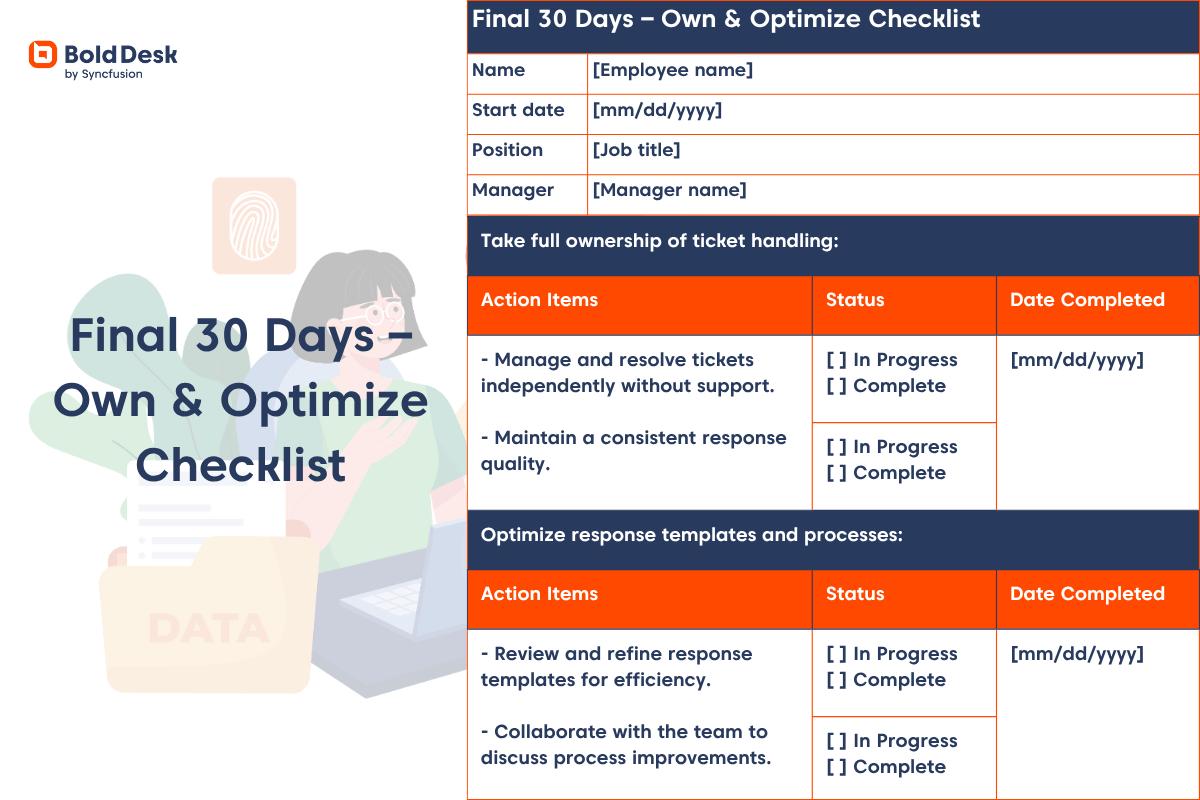
Result: As the onboarding process concludes, new agents should feel a strong sense of belonging and competence. Their ability to optimize workflows and respond effectively lays the foundation for a successful career in support.
Feedback and refine support
The journey doesn’t end after 90 days. Continuous feedback and opportunities for learning are vital for ongoing improvement and engagement.
This phase of the onboarding checklist template encourages agents to reflect on their performance and identify areas for growth.
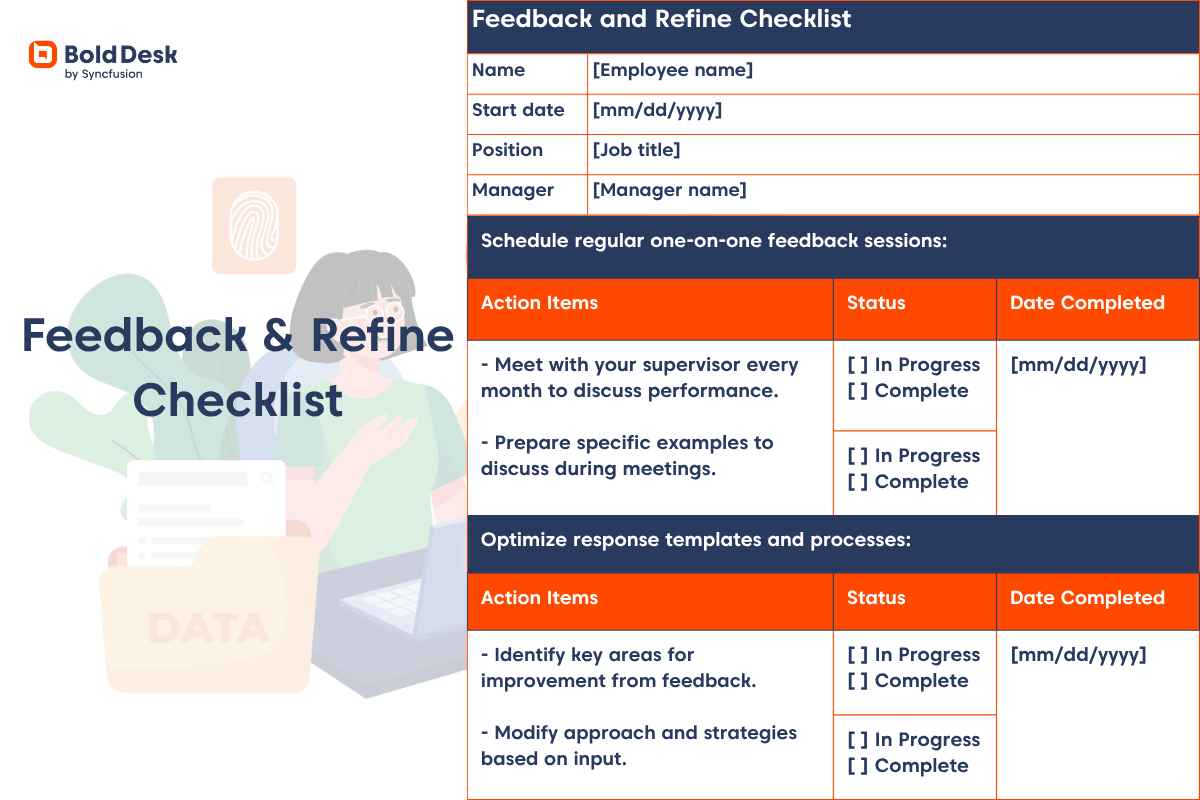
Result: Fostering an environment where feedback is valued improves individual performance and raises the overall quality of customer service provided through a support system.
Easy help desk onboarding checklist for new users
Transitioning to support software can be overwhelming. This onboarding checklist template outlines essential steps for a smooth setup, system configuration, and training.

Initial system setup
Start by setting up the help desk system based on your organization’s needs. Configure the software properly to ensure effective functionality.
A strong foundation prepares you for future operations. Completing the initial setup makes your help desk software ready for use.
A well-configured platform supports personalized user experiences, aligning the software with your support processes.
☐ Create your help desk account.
☐ Choose and activate your preferred pricing plan.
☐ Configure your company profile (name, logo, time zone).
☐ Add support email addresses and set up email forwarding.
☐ Set up custom domain or subdomain (if applicable).
Add users and define roles
Next, add team members and assign roles within the help desk. Proper user management is crucial for clear responsibilities and productivity.
Ensure each agent has the access they need. After adding users, your help desk system will improve collaboration.
Clearly defined roles help agents to understand their contributions and enhance overall team productivity.
☐ Invite support agents, admins, and other team members.
☐ Assign roles and permissions based on responsibilities.
☐ Group users into departments or functional teams.
Ticketing workflow configuration
Configuring the ticketing workflow is key for managing customer inquiries effectively.
Establish rules for creating, assigning, prioritizing, and resolving tickets to streamline your support process. A well-defined workflow improves response times and consistency. This structured approach supports your team in delivering a seamless customer support experience.
☐ Customize ticket statuses (e.g., New, In Progress, Resolved).
☐ Define priority levels for tickets.
☐ Set up automation rules (assignment, SLAs, notifications).
☐ Create ticket categories and tags.
☐ Add canned responses for common replies.
Enable communication channels
Enable various communication channels to provide seamless customer support. A multi-channel approach enhances accessibility and responsiveness.
Offering multiple communication options boosts customer satisfaction. This flexibility fosters trust and engagement with your brand.
☐ Set up email, live chat, and contact form channels.
☐ Integrate with social media platforms (Facebook, Twitter, WhatsApp, Telegram).
☐ Enable chatbot or AI assistant (if supported).
Define business rules and SLAs
Setting up business rules and service level agreements (SLAs) is crucial for managing expectations.
Outline how quickly customers can expect responses and the standards your team will maintain. Establishing rules and SLAs leads to consistent service quality.
This clarity helps your team prioritize their workload effectively and builds customer trust in your support.
☐ Set your business hours and holiday calendar.
☐ Create SLA policies for various ticket types or teams.
☐ Configure escalation rules for delayed or unattended tickets.
Tool and system integrations
Integrate your help desk software with other tools for improved efficiency, including CRM platforms and project management solutions. Integrations enable a seamless flow of information across your organization.
Successful integrations enhance agent productivity and decision-making. A consolidated information stream allows for informed responses, boosting the overall quality of service.
☐ Connect CRM, project management, or communication tools.
☐ Configure APIs or webhooks for advanced integrations.
☐ Enable marketplace apps or third-party integrations.
Setting self-service options
Providing self-service options enables customers to find solutions on their own. By creating a knowledge base, FAQs, and other resources, you can significantly reduce the number of support tickets. Effective self-service options alleviate pressure on your support team.
Quick access to answers enhances customer satisfaction and fosters loyalty and trust.
☐ Build a knowledge base with categories and articles.
☐ Enable and brand your customer portal.
☐ Add FAQs and enable article rating/feedback options.
Agent training and knowledge sharing
Training agents is vital for their confidence and effectiveness. Focus on educating them about the software and customer needs while fostering knowledge sharing among the team. A dedicated training module should be a core component of your agent onboarding checklist.
Investing in training ensures your support team uses the software effectively. A well-prepared team handles customer inquiries competently, elevating service quality.
☐ Conduct onboarding or walkthrough sessions.
☐ Share help articles, videos, or guides with the team.
☐ Educate agents on ticket handling and best practices.
Launch and ongoing monitoring
After onboarding, it’s time to launch your help desk software. Begin providing support while committing to ongoing performance monitoring.
This ensures your support system continues to improve over time. The launch marks the start of a productive support journey.
Regular monitoring helps identify areas for improvement and ensures long-term success for your team and customers.
☐ Go live with your help desk for real customers.
☐ Monitor ticket flow, SLA adherence, and agent performance.
☐ Collect customer feedback and refine workflows regularly.
Build strong support teams with a better agent onboarding program
Creating a solid agent onboarding checklist is more than just a list of tasks – it’s the key to turning new hires into confident, skilled customer support champions.
This agent onboarding program assists new agents in developing their skills and fosters a culture of excellence within your support team. This, in turn, enhances service quality and keeps customers satisfied.
If you’re looking for an outstanding customer support platform to improve your onboarding and support processes, check out BoldDesk.
It streamlines agent onboarding with user-friendly help desk software tailored for effective customer support.
From automated workflows to centralized knowledge bases, new agents can quickly learn the system and start resolving tickets with confidence, boosting productivity from day one.
We’re committed to continually improving our resources and tools to serve your needs better.
Do you have specific challenges or unique use cases you’d like us to address? Your feedback is crucial in helping us create even more effective solutions.
Share your ideas in the comments.
Related articles
- 11 Effective Ways of Reducing Agent Effort in Customer Service
- 13 Best Help Desk Ticketing Systems for 2025
Frequently asked questions
Here are the main steps in agent onboarding, made to help new agents feel ready and confident in their job:
- Pre-Onboarding Preparation
- Orientation
- Tool and System Setup
- Knowledge Sharing
- Performance Monitoring & Feedback
- Ongoing Support
- Who they are – Learn about the types of customers you serve (like their roles, industries, or common profiles)
- What problems they face – Know the typical issues or questions they bring to support
- How to talk to them – Understand the tone, style, and language your team uses (formal, friendly, technical, etc.)
- When and how they expect help – Be aware of your support hours, response time goals, and service level agreements (SLAs)

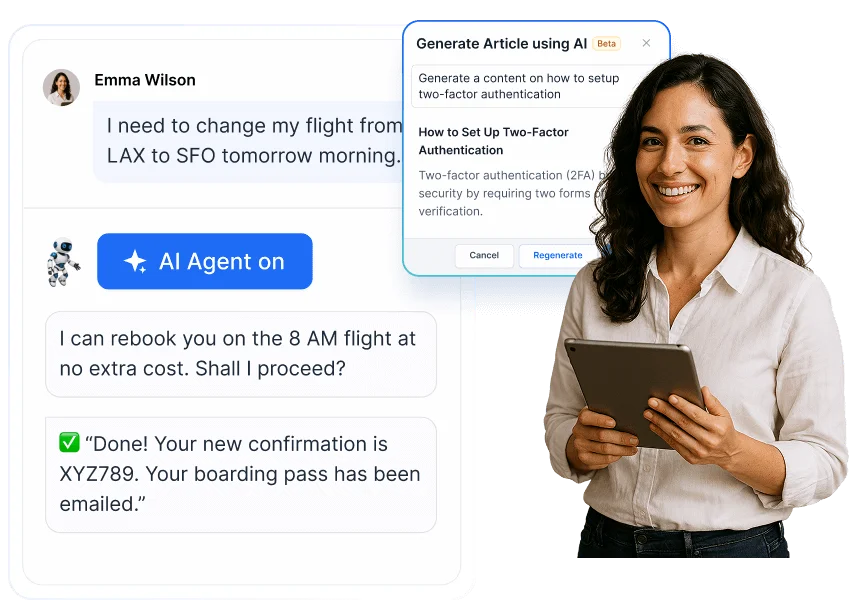

















 Email Ticketing System
Email Ticketing System Shared Inbox Software
Shared Inbox Software Multi Brand Help Desk
Multi Brand Help Desk Internal Help Desk Software
Internal Help Desk Software Trouble Ticketing Software
Trouble Ticketing Software Mobile Help Desk
Mobile Help Desk 











